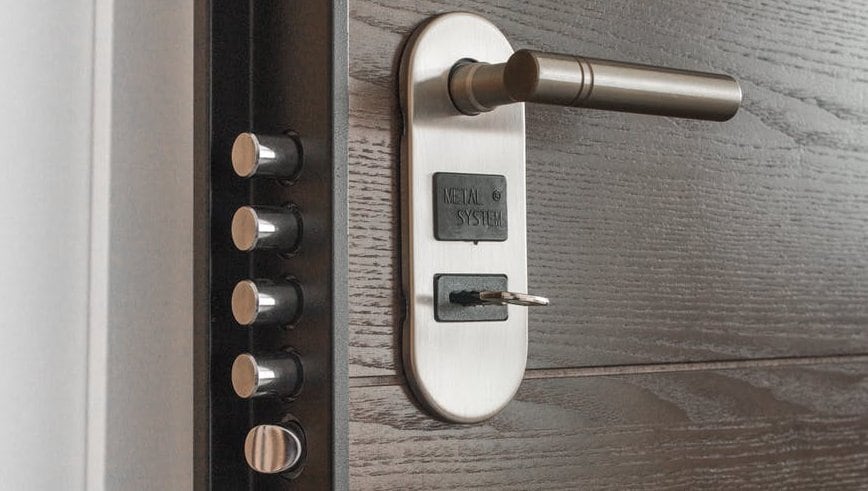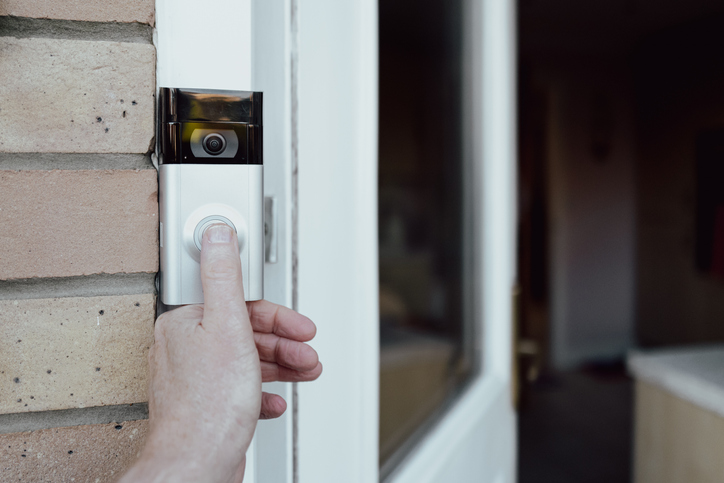As seniors choose to age in place, ensuring their safety and well-being within their homes becomes paramount. Home security for aging in place involves implementing a comprehensive set of safety measures to protect seniors from potential risks such as accidents, intruders, and scams. This article explores the key safety concerns faced by seniors living at home, the significance of home modifications, the integration of technology, and effective strategies for medication management to create a secure living environment that promotes independence and peace of mind for seniors as they gracefully embrace their golden years at home.

- Key Safety Concerns For Seniors Aging In Place
- Enhancing Home Security With Technology
- Essential Safety Features For Home Security Systems
- Modifying Homes For Aging In Place
- Securing Windows, Doors, And Outdoor Areas
- Personal Security And Identity Theft Protection
- Medication Management And Home Security
- Conclusion
Key Safety Concerns For Seniors Aging In Place
As seniors choose to age in place, they often encounter specific safety challenges within their homes. One significant concern is the decline in physical abilities, which can lead to difficulties in performing daily tasks and navigating the environment. Mobility issues, reduced balance, and muscle weakness increase the risk of accidents and falls. Additionally, cognitive decline may affect memory and decision-making, making it challenging for seniors to recognize potential dangers or remember safety precautions.
Moreover, chronic health conditions such as arthritis, osteoporosis, and vision impairments can further compromise their safety. The combination of physical limitations and cognitive changes necessitates special attention to home safety measures tailored to seniors’ needs.
Addressing The Increased Vulnerability To Accidents And Falls
Falls are a leading cause of injury among seniors aging in place. According to the Centers for Disease Control and Prevention (CDC), one in four Americans aged 65 and older experiences a fall each year. These falls can result in fractures, head injuries, and other severe consequences. To address this heightened vulnerability, several safety measures can be implemented.
Evaluate the home for potential hazards and make necessary modifications. Install grab bars in bathrooms, use non-slip mats, and ensure clear pathways to minimize tripping hazards. Ramps and stairlifts can aid seniors with mobility challenges.
Encourage the use of walking aids like canes or walkers to provide stability and reduce the risk of falls. Engaging in appropriate physical activities can improve strength, balance, and flexibility, reducing the likelihood of falls. Conduct regular reviews of medications with healthcare professionals to avoid interactions or side effects that may cause dizziness or imbalance.
According to the Centers for Disease Control and Prevention (CDC), falls are the leading cause of injury among seniors, with one in four Americans aged 65 and older experiencing a fall each year. Implementing home security measures, such as installing grab bars, ensuring proper lighting, and removing tripping hazards, can significantly reduce the risk of falls and enhance the safety of seniors aging in place.
The Potential Risks Of Intruders And Scams Targeting Seniors
Seniors are often perceived as more vulnerable targets for criminals and scammers due to factors such as a trusting nature, limited technical knowledge, and a willingness to engage with others. Intruders may see them as easier targets for burglaries, home invasions, or fraud. Additionally, scams targeting seniors can take various forms, including phone calls, emails, or doorstep solicitations.
Installing a reliable home security system with alarms, sensors, and monitoring capabilities can deter potential intruders and provide peace of mind. Inform seniors about common scams and teach them to recognize warning signs, such as unsolicited requests for personal or financial information. Advise seniors to utilize caller ID and avoid answering unfamiliar numbers. Implement call-blocking features to reduce unwanted calls. Encourage regular communication with family members or trusted friends who can help identify and prevent potential scams.
Enhancing Home Security With Technology
Technology plays a pivotal role in enhancing home security for seniors aging in place. Advancements in smart devices and home automation systems have revolutionized the way seniors can protect themselves and their homes. By leveraging technology, seniors can have greater control over their living environment, improved response times during emergencies, and peace of mind knowing their safety is prioritized.
Smart home security systems enable seniors or their caregivers to monitor their homes remotely. Through mobile apps or web interfaces, they can check live video feeds, arm or disarm security systems, and receive real-time alerts about potential security breaches.
Technology allows for immediate alerts in case of suspicious activities or emergency situations, such as break-ins, fires, or medical emergencies. These notifications can be sent to the seniors, family members, or even emergency responders, ensuring timely assistance.
Many modern security systems offer user-friendly interfaces with large buttons and voice commands, making them accessible for seniors with varying levels of technological familiarity or physical limitations.
Benefits Of Home Automation Systems And Smart Devices
Home automation systems and smart devices offer a range of benefits that significantly enhance the security and convenience for seniors aging in place. Automated systems allow seniors to control various aspects of their home with ease. They can adjust lighting, lock doors, control thermostats, and manage appliances without physically exerting themselves.
Smart home devices can optimize energy consumption, leading to potential cost savings on utility bills. Home automation systems can be interconnected, allowing devices to work seamlessly together. For example, when a security camera detects motion at the front door, it can trigger the lights to turn on, enhancing both security and safety. Smart sensors can detect changes in temperature, humidity, and air quality, providing insights into potential hazards like fire or gas leaks.
Utilizing Medical Alert Systems
Medical alert systems are a critical component of home security for seniors, especially those with medical conditions or mobility challenges. These systems typically consist of wearable devices, such as necklaces or bracelets, with a panic button that can be pressed in emergencies.
When a senior activates the panic button, the medical alert system immediately connects them to a monitoring center staffed with trained operators. These operators can assess the situation and contact appropriate emergency services if needed.
Some medical alert systems are equipped with fall detection technology that can automatically detect falls and trigger an alert even if the senior is unable to press the panic button. For seniors living alone, having a medical alert system provides reassurance that help is just a button press away in case of accidents or sudden health issues. Medical alert systems offer around-the-clock monitoring, ensuring seniors are protected at all times, even when they are sleeping.
Essential Safety Features For Home Security Systems
Selecting the right home security system is crucial for ensuring the safety and well-being of seniors aging in place. Several key features should be taken into account during the decision-making process.
Opt for a security system that offers centralized monitoring through a professional monitoring center. This ensures that trained personnel are alerted in case of emergencies, even if the senior is unable to call for help.
Consider a system with an easy-to-use interface, large buttons, and clear instructions to accommodate seniors with varying technological expertise. Wireless security systems are more flexible, easier to install, and less susceptible to tampering. They also prevent potential tripping hazards from wires.
Look for a security system with a reliable battery backup to ensure functionality during power outages. A good security system should allow customization to meet the specific needs and layout of the senior’s home.
Alarms, Sensors, And Monitoring Options For Comprehensive Protection
Comprehensive home security systems incorporate various alarms, sensors, and monitoring options to cover all potential security threats.
Door and window sensors trigger an alarm if doors or windows are opened while the system is armed, alerting the resident and monitoring center of potential intrusions. Motion sensors can detect movement within specific areas of the home, raising alarms if unauthorized activity is detected. Indoor and outdoor security cameras provide real-time video monitoring, enabling seniors or their caregivers to keep an eye on their property remotely.
Integrated smoke and fire detectors instantly alert the monitoring center and the resident in case of a fire emergency. These detectors sense dangerous carbon monoxide levels and activate alarms to prevent carbon monoxide poisoning.
Panic buttons, often included with medical alert systems, can also be integrated into home security systems to quickly call for help in non-medical emergencies. Integrating security systems with home automation allows for automated responses to security events, such as turning on lights when motion is detected.
Modifying Homes For Aging In Place
Home modifications are essential for creating a safe and accessible living environment for seniors aging in place. These modifications aim to accommodate the specific needs and challenges that come with aging, promoting independence and reducing the risk of accidents. Adaptive equipment complements these modifications, providing tools that assist seniors in performing daily tasks with ease. Additionally, you can use Universal Design as a means to make your home universally accessible at any age. There are 7 main principles for Universal Design.
Installing grab bars in bathrooms and along stairways provides seniors with stable support, reducing the likelihood of slips and falls. For seniors with mobility challenges, ramps and stairlifts offer convenient access to different levels of the home without the need to navigate stairs.
Beds, chairs, and tables with adjustable heights accommodate seniors with varying physical abilities and can promote better posture. Lever handles are easier to operate than traditional doorknobs, making it simpler for seniors with reduced hand strength or dexterity to open doors.
Making Bathrooms, Stairs, And Other Areas Safer For Seniors
Certain areas of the home require special attention to ensure the safety and accessibility of seniors. Implementing specific modifications and safety measures can significantly reduce the risk of accidents.
Place non-slip mats on bathroom floors, use a raised toilet seat to ease sitting and standing, and ensure adequate lighting to prevent tripping hazards. Install handrails on both sides of staircases, ensure that stairs are well-lit, and place anti-slip strips on each step.
Organize frequently used items within easy reach, install pull-out shelves to avoid bending, and use appliances with large, easy-to-read controls. Arrange furniture to create clear pathways, remove loose rugs that might cause tripping, and secure electrical cords to prevent accidents. Ensure a bedside lamp is within reach, place a phone or medical alert device close to the bed, and use a comfortable and supportive mattress.
Securing Windows, Doors, And Outdoor Areas
Securing windows and doors is essential to prevent unauthorized access to the home and safeguard the well-being of seniors aging in place. Choosing the right locks and entry systems is crucial to ensure maximum security.
Install high-quality deadbolt locks on all exterior doors. Grade 1 or Grade 2 deadbolts are recommended for their sturdiness and resistance to forced entry. Consider using keyless entry systems, such as electronic keypads or smart locks. These provide convenience and eliminate the need for physical keys that can be lost or stolen.
Reinforce the strike plates on door frames with longer screws to make it harder for intruders to kick in the door. Use window locks on all windows, including sliding windows and basement windows, to prevent unauthorized entry. Consider installing security doors with reinforced frames and heavy-duty locks for an added layer of protection.
Importance Of Outdoor Lighting And Landscaping For Security
Adequate outdoor lighting and well-maintained landscaping play a significant role in enhancing home security. Install motion-activated lights around the perimeter of the house, near entryways, and in dark areas of the yard. These lights automatically turn on when motion is detected, alerting homeowners to potential activity and deterring intruders.
Consider using floodlights to illuminate large areas of the property, providing increased visibility at night and discouraging unwanted visitors. Trim overgrown bushes and trees near windows and entryways, reducing potential hiding spots for intruders.
A well-kept lawn and garden give the impression that the property is regularly cared for, which can discourage burglars who target vacant-looking homes. Ensure that the front of the house is easily visible from the street, making it less attractive to potential intruders who prefer to remain hidden from view.
Personal Security And Identity Theft Protection
Seniors are often targeted by scammers and identity thieves due to their trusting nature and potentially limited knowledge of modern technology. Protecting personal information is crucial for safeguarding against various scams and identity theft.
Inform seniors about prevalent scams such as phishing emails, phone call scams, lottery or prize scams, and requests for personal information from unfamiliar sources. Advise seniors to never share personal or financial information over the phone or email, especially if they are unsure about the legitimacy of the request.
Encourage the use of strong, unique passwords for online accounts and enable two-factor authentication whenever possible. Remind seniors to be cautious about the information they share on social media, as scammers may use this data to target them more effectively. Teach seniors to verify the authenticity of emails, messages, or callers by independently verifying the source before providing any information.
Educating Seniors About Potential Risks And Ways To Avoid Scams
Educating seniors about potential risks and providing them with strategies to avoid falling victim to scams is of utmost importance in today’s digital age. Seniors are often targeted by scammers due to their trusting nature and may lack familiarity with the evolving tactics used to exploit personal information. To safeguard themselves, seniors should be well-informed about common scams and equipped with the knowledge to identify warning signs.
Spotting red flags is an essential skill that seniors should develop. They should be wary of unsolicited requests for money, particularly those that involve urgency and high-pressure tactics. Scammers often use emotional manipulation to extract funds or personal information from their targets. Seniors should be cautious of requests for gift cards, wire transfers, or payments to unfamiliar entities, as these are common elements of fraudulent schemes.
It is crucial for seniors to be cautious about door-to-door solicitations as well. While some offers may appear tempting, it is essential to verify the legitimacy of the service or product being offered. Scammers may attempt to exploit seniors’ trust and vulnerability through in-person interactions, making it vital to seek the advice of family members, friends, or caregivers before making any significant financial decisions or sharing personal information.
Regularly monitoring financial accounts is another key defense against scams and identity theft. Seniors should review their financial statements and credit reports periodically to identify any suspicious activity or unauthorized transactions. If anything seems amiss, they should report it promptly to their financial institution and take the necessary steps to secure their accounts.
Encouraging seniors to report any suspicious calls, messages, or solicitations to local authorities or consumer protection agencies like the Federal Trade Commission (FTC) empowers them to take an active role in combating fraud. By reporting scams, seniors can contribute to efforts in preventing others from falling victim to similar schemes.
Medication Management And Home Security
Effective medication management is paramount for seniors who choose to age in place, as it directly impacts their health and well-being. As seniors age, they often contend with multiple prescriptions to manage chronic conditions, making adherence to medication regimens critical for maintaining their overall health. Failing to take medications as prescribed can lead to serious health complications and potentially life-threatening situations. Therefore, it is crucial to stress the importance of safe medication management for seniors.
Encouraging seniors to adhere to regular medication schedules ensures they receive the right dosage at the correct time, optimizing treatment effectiveness. For medications with time-sensitive dosages or those requiring precise timing, consistency is particularly vital. Avoiding missed doses is essential, as it can disrupt treatment plans and reduce medication efficacy. Implementing reminder systems or tools to prompt seniors to take their medications can help mitigate this issue.
Seniors should also be cautious about accidentally double-dosing, especially if they experience memory or cognitive challenges. Implementing effective medication management strategies can prevent such errors and promote safer medication practices. Proper storage of medications is equally important to maintain their potency and safety. Seniors should be educated on storing medications away from direct sunlight and humidity. They should be aware of proper medication disposal methods to prevent accidental ingestion or misuse.
How Technology Can Assist In Medication Reminders And Tracking
Technology offers invaluable assistance to seniors in effectively managing their medications and promoting adherence to prescribed regimens. These innovative solutions play a crucial role in ensuring seniors’ well-being while aging in place:
Medication reminder apps are readily available on smartphones and tablets, providing customized alerts and notifications for seniors to take their medications on time. These apps can be programmed according to individual medication schedules, helping seniors stay on track with their prescribed doses and reducing the risk of missed medications.
Smart pill dispensers are another technological marvel designed to simplify medication management. Equipped with alarms and compartments, these devices dispense medications at scheduled times, eliminating confusion and minimizing the likelihood of missed doses. Some smart pill dispensers even offer the capability to send alerts to family members or caregivers if a dose is not taken as scheduled, ensuring an added layer of oversight and support.
Medication management platforms, accessible through online portals or software applications, enable seniors to organize and monitor their medications comprehensively. These platforms provide features such as setting reminders, tracking medication history, and facilitating communication with healthcare providers. Such technological tools empower seniors to take an active role in managing their health, giving them a sense of control and confidence in their daily medication routines.
Electronic health records (EHRs) also contribute significantly to medication management and coordination of care. Healthcare providers can access and update a patient’s medication information through EHR systems, ensuring a seamless flow of data and reducing the risk of adverse drug interactions or duplications. This comprehensive approach to managing medications enhances the overall quality of care for seniors aging in place.
Telehealth services, increasingly popular in the digital age, allow seniors to connect with healthcare providers remotely. These virtual consultations enable seniors to discuss their medications, ask questions, and address any concerns they may have without leaving the comfort of their homes. Telehealth services foster proactive communication between seniors and healthcare professionals, promoting better medication adherence and overall health outcomes.
Conclusion
Home security is a critical aspect of aging in place for seniors, ensuring their safety, well-being, and independence within the comfort of their homes. By implementing the discussed safety measures, such as home modifications, technology integration, and vigilant medication management, seniors can mitigate potential risks and create a secure living environment tailored to their unique needs. Addressing safety concerns related to intruders, falls, and scams, as well as emphasizing the importance of safeguarding personal information, empowers seniors to confidently age in place with peace of mind. By prioritizing home security for seniors, we can foster an environment that promotes a higher quality of life and enables them to enjoy their golden years to the fullest.




